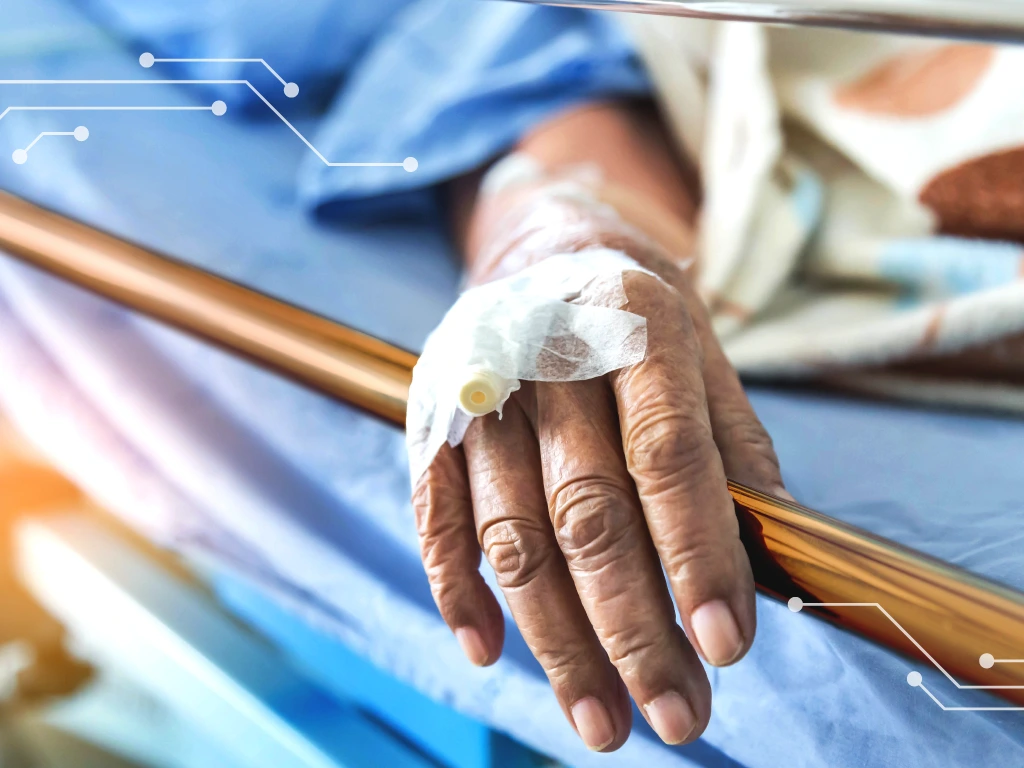Did you know that it took hundreds of years for the medical community to accept the idea that mixing germs and open wounds isn’t a good idea. While we have come a long way in the medical field, we still face the same resistance to new pathogen-reducing technologies as weariness toward the efficacy and price of potential solutions grows.
Healthcare-Associated Infections Today
Over the past decade, healthcare leaders have made strides in implementing advanced training and monitoring, while improving chemical solutions for cleaning and disinfection. However, Healthcare-Associated Infections (HAIs) remain a major concern. Not only are they a major cause of mortality, but they negatively impact the healthcare system financially. The CDC’s 2020 analysis highlighted “significant increases in CLABSI, CAUTI, VAE, and MRSA bacteremia.”
“The unfortunate reality is that in one year we lost nearly a decade of progress against HAIs."
Standard Practices
We have both an opportunity and responsibility to improve pre-pandemic rates. But we cannot do that with our current manual cleaning and disinfection practices alone.
With manual cleaning and disinfection:
- Over 50% of targeted touchpoints are missed
- 40% of touchpoints are inadequately disinfected
- High-touch sites are rapidly re-contaminated
- Pathogens found on the floor quickly spread to other areas
In light of the current labor shortage, facilities need to explore options that add to the current disinfection practices without requiring additional staff.
Increased Demand for New Technologies to Fight HAIs
The demand for alternative disinfecting and sanitization solutions has never been higher. In 2021, the Hospital Acquired Infection Control Market size was estimated to be $29.13 billion. Similarly, the U.S. Indoor Air Quality market was valued at $9.8 billion in 2022, and is anticipated to reach $11.9 billion by 2027.
"The increasing adoption of advanced technologies such as sterilization equipment, disinfectants, and UV-C light for infection control is also contributing to the growth of the market.”
With an average of 99,000 annual deaths associated with HAIs in the U.S., it makes sense that the market is expected to expand as the demand for hospital staff grows. As more hospitals begin to implement new strategies, it’s important that they research and understand the different technologies on the market and their efficacy rates.
The Rise of Supplemental Solutions for Terminal Cleaning
The Benefits of Enhanced Terminal Room Disinfection Study was one of the first to support the use of supplemental solutions. Early adopters with available funding were eager to add these solutions to their bundled approach for reducing transmission and the presence of HAIs.
UV-C Lights, Devices, and Robots
One of the most common supplemental technologies found in healthcare is whole-room UV-C devices. These devices work by exposing the surfaces in an unoccupied, targeted room to ultraviolet light. Once precautions are in place, the technology is powered on by a trained operator. The UV light then breaks down the DNA bonds of surface pathogens, inactivating them.
These devices are typically equipped with either a mercury vapor bulb or a pulsing xenon bulb. They may be operated by a robot or may come as a portable device that can be moved from room to room. UV-C devices have been proven to accomplish a reduction of vegetative bacteria in 15-20 minutes and of bacterial spores in 35-100 minutes.
Hydrogen Peroxide Misters & Vapor Systems
Another style of supplemental disinfection is hydrogen peroxide, or H2O2 misters. These systems disperse vaporized hydrogen peroxide throughout a targeted, sealed room. The hydrogen peroxide then reacts with the cell structures in pathogens, rendering them unable to reproduce. Concentrations in H2O2 vapor systems can be as high as 35%, which is much stronger than the average 0.5% in peroxide surface wipes. Hydrogen peroxide has been reported to reduce pathogens anywhere from 86% to 100%.
Disadvantages of Terminal Cleaning Solutions
While these systems claim to improve the environment of care and reduce HAIs, they have a few limitations worth mentioning.
UV-C and hydrogen peroxide terminal solutions:
— Do not prevent room recontamination. Neither technology provides ongoing protection when turned off.
— Have high acquisition costs. Additional service or usage fees may apply, depending on the brand.
— Require trained operators, which may further restrict usage due to a lack of educated, available workers.
— Delay room turnover. Rooms must be unoccupied during the run time, which can be anywhere from 20 minutes to a few hours. This is in addition to any required room prep time necessary to safely operate the equipment.
— Are unrealistic as whole-hospital solutions. These measures are what we call ‘episodic’ — meaning they can only treat one room at a time and are not suitable for active environments like waiting rooms, physician charting areas, and staff break rooms.
The current standards of terminal cleaning are not enough to prevent a viral outbreak. By introducing purification systems that focus on reducing pathogens in their environment, not only can you expect to see a decrease in transmission of HAIs but also an increase in better patient experiences.



